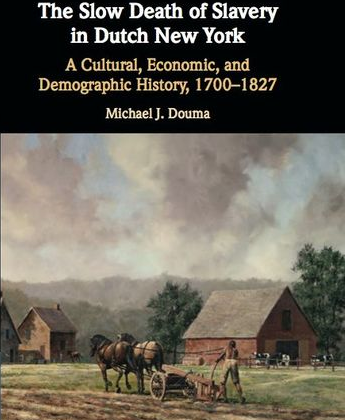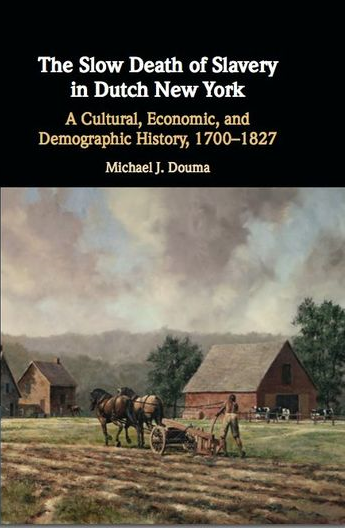

Michael J. Douma is Associate Professor in the McDonough School of Business and Director of the Georgetown Institute for the Study of Markets and Ethics at Georgetown University. This interview is based on his new book, The Slow Death of Slavery in Dutch New York: A Cultural, Economic, and Demographic History, 1700–1827 (Cambridge University Press, 2024).
JF: What led you to write The Slow Death of Slavery in Dutch New York?
MD: All of my main historical interests seemed to collide on this topic. I began as a scholar of immigration, specifically studying Dutch Americans. I then transitioned towards scholarship on American slavery about 12 years ago. I’ve also written economic and legal history, two approaches that I used in the book. I had written a few articles on New York history, when I began thinking about the topic in about 2016 or 2017. But my research began in earnest in 2018. I believe historians need to address salient topics, and, I thought to myself, what is more important in American history than slavery and its legacy? I then knew very little about slavery in the North. I knew, as a historian with an education in economics, that I would address the economic angle of slavery. Little did I realize when I started the research that there had been almost nothing written on the economics of slavery in the North, especially compared to the extensive literature on the economics of slavery in the South. That provided some extra motivation to contribute where others hadn’t dared to tread. As my research progressed, I found error after error in previous treatments of the subject and began to realize that the topic was bigger and more interesting than almost anyone knew.
JF: In 2 sentences, what is the argument The Slow Death of Slavery in Dutch New York?
MD: I argue that there were a lot more Dutch-speaking slaves in New York than historians have recognized, and that Dutch American slavery was substantial, unique, profitable, and longer lasting than previously known.
JF: Why do we need to read The Slow Death of Slavery in Dutch New York?
MD: Imagine if someone told you that there were once 10,000 Dutch-speaking slaves in New York state, and that these slaves did not generally live in NYC, but in the rural areas of the Hudson Valley and Long Island, and that they spoke Dutch even in the first decades of the 19th century? By understanding their story, how they resisted slavery, and how Dutch New York slaveholders resisted emancipation, we have a much better understanding of why slavery in New York state did not end until 1827. The methods and approaches of the book, from demographics to economics, and from cultural history to legal history, also provide new and interesting ways for other historians to approach their research.
JF: Why and when did you become an American historian?
MD: I think some of us become historians very early. I was probably 13 years old when I first asked to see old local maps at my city’s library. As a kid, I was fascinated with old buildings, old books, old papers, and old people. As a freshman at Hope College, I found a job working in my college’s archives, and there I began to learn history from the primary sources. To this day, I have never read an American history textbook cover-to-cover, as I prefer primary source research and narrow published monographs over general surveys.
JF: What is your next project?
MD: I have a number of books in progress on Dutch themes. One is a textbook for learning to read Theological Dutch, which I am using for a Dutch language course that I teach at the Reformed Theological Seminary in Virginia. For years, I have also been collecting sources for a history of the Dutch language in the U.S. I’m writing a number of articles on the economics and demographics of slavery in the American North, and, my dearest project is my first work of fiction, a full-length satirical and imaginary history of a county “published” in 1883, written in the style and vocabulary of a statistically-minded windbag Gilded Age historian.
JF: Thanks, Michael!